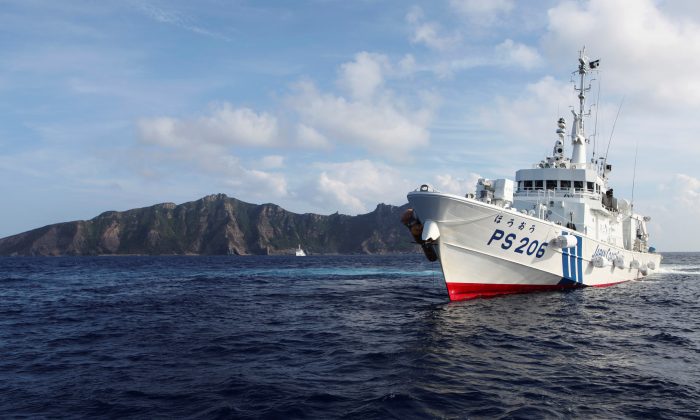Kroger Posts 30 Percent Jump in March Comparable Sales, Borrows $1 Billion
News Analysis
A Chinese fishing boat and a Japanese guided-missile destroyer reportedly collided in the East China Sea, causing a three-foot long gash that could have sunk the $646 million warship.
The JS Shimakaze guided-missile destroyer was on regular patrol on Monday night in the East China Sea, about 350 nautical miles west of Japan’s Yakushima Island, when the collision with the Chinese fishing boat occurred, according to Japan Defense Minister Taro Kono.
Kono confirmed the collision left a hole of about three feet long by three-quarters of an inch wide located on the port side, about 15 feet above the Shimakaze’s waterline.
“No personnel were injured and no one from the Chinese fishing boat was missing. We are checking details,” Kono wrote.
Kono stated that the Japan Ministry of Defense and Coast Guard are currently investigating the incident.
The 492-foot-long JS Shimakaze has a displacement of 4,000 metric tons under standard load and up to 6,000 metric tons under full load, and can accommodate a crew of 260.
China’s Foreign Ministry spokeswoman Hua Chunying asserted that “the collision occurred in the coastal waters of China” and one of its fishermen suffered a lower back injury. She claimed the Japanese warship was sailing in relevant waters and endangered the safety of the Chinese vessel. She added that China and Japan are in communication to determine the cause and “prevent such incidents from happening again.”
The site of the accident off Yakushima Island is far to the north of an area disputed between the two countries, Japan’s defense ministry said.
In 1895, Japan claimed the Senkaku Islands (known in China and Taiwan as the Diaoyu Islands), located just 137 miles northwest of Taipei in the East China Sea. The islands were unowned before Japan officially obtained control, but China claims centuries of sovereignty over the islands. Both nations claim the islands and a surrounding 200-nautical-mile exclusive economic zone (EEZ) give rights to establish artificial islands and develop natural resources.
The United States has backed Japan’s claims since the Cold War.
The latest incident between the Chinese and Japanese vessels in the East China Sea follows a series of provocative acts by China’s People’s Armed Forces Maritime Militia (PAFMM), referred to as “little blue men.”
The PAFMM, with their steel-armored fishing boats, also provoke Vietnam and Taiwan forces in a bid to expand China’s control to over 80 percent of the South China Sea, which encompasses an area of 1.4 million square miles in the Pacific Ocean.
The U.S. National Security Strategy (NSS) stressed in 2017 that China is engaged in continuous competition with America—neither fully “at peace” nor “at war.” The NSS identified the PAFMM as representing a “significant and growing risks to U.S. interests and values.”
With $3.37 trillion of ocean-going trade and up to 22 billion barrels of oil and 290 trillion cubic feet of natural gas, China, Japan, Malaysia, the Philippines, Vietnam, Brunei and Taiwan are asserting economic claims to sections of the East and South China Seas.
China filed a declaration in 2016 of “historic rights” to a U-shaped “nine-dash line” extending about 1,500 km (932 miles) south of its mainland. After dredging to form several artificial islands, China constructed military infrastructure on several artificial islands to deploy anti-ship and anti-aircraft missile systems.
But when an appeal to the UN Convention on the Law of the Sea tribunal ruled that China’s claims were invalid, Chinese leader Xi Jinping refuted the decision, saying that it was “invalid and has no binding force” against the ancient rights of China.
However, the Trump administration in November 2018 promised “ironclad and enduring U.S. commitment to the region and highlighted expanded cooperation with our partners” in order to ensure a “free and open Indo-Pacific.”
This article is from the Internet:Japanese Destroyer Is Damaged by Chinese Fishing Boat After Collision in East China Sea
Nearly 1,300 More CCP Virus Patients Hospitalized in New York as Death Toll Approaches 2,000
